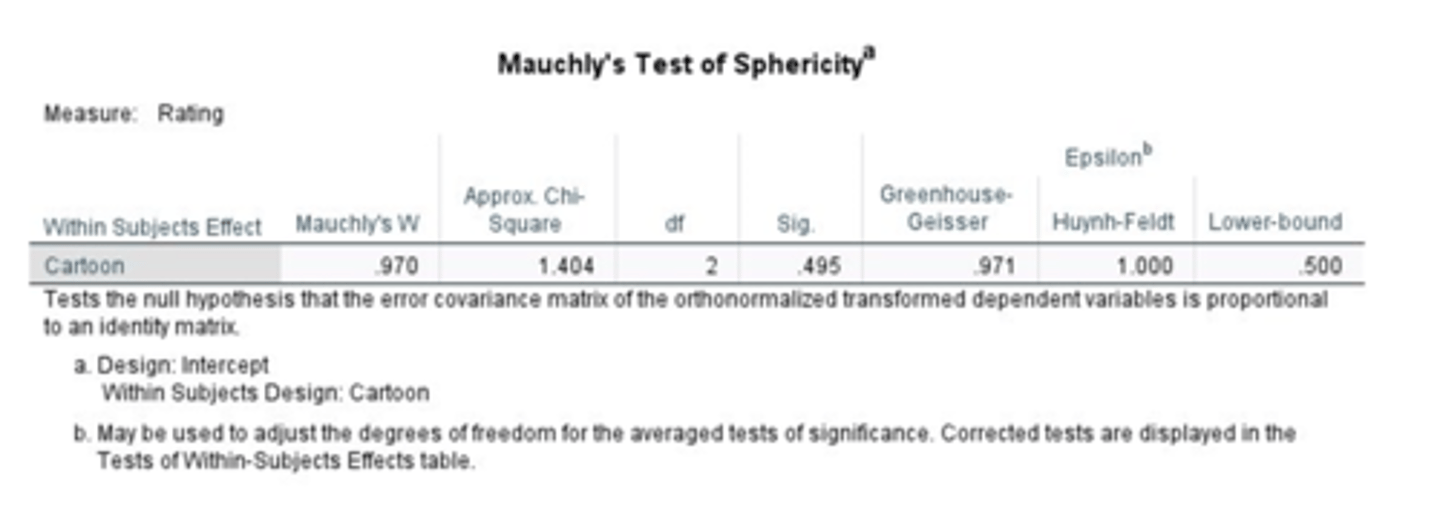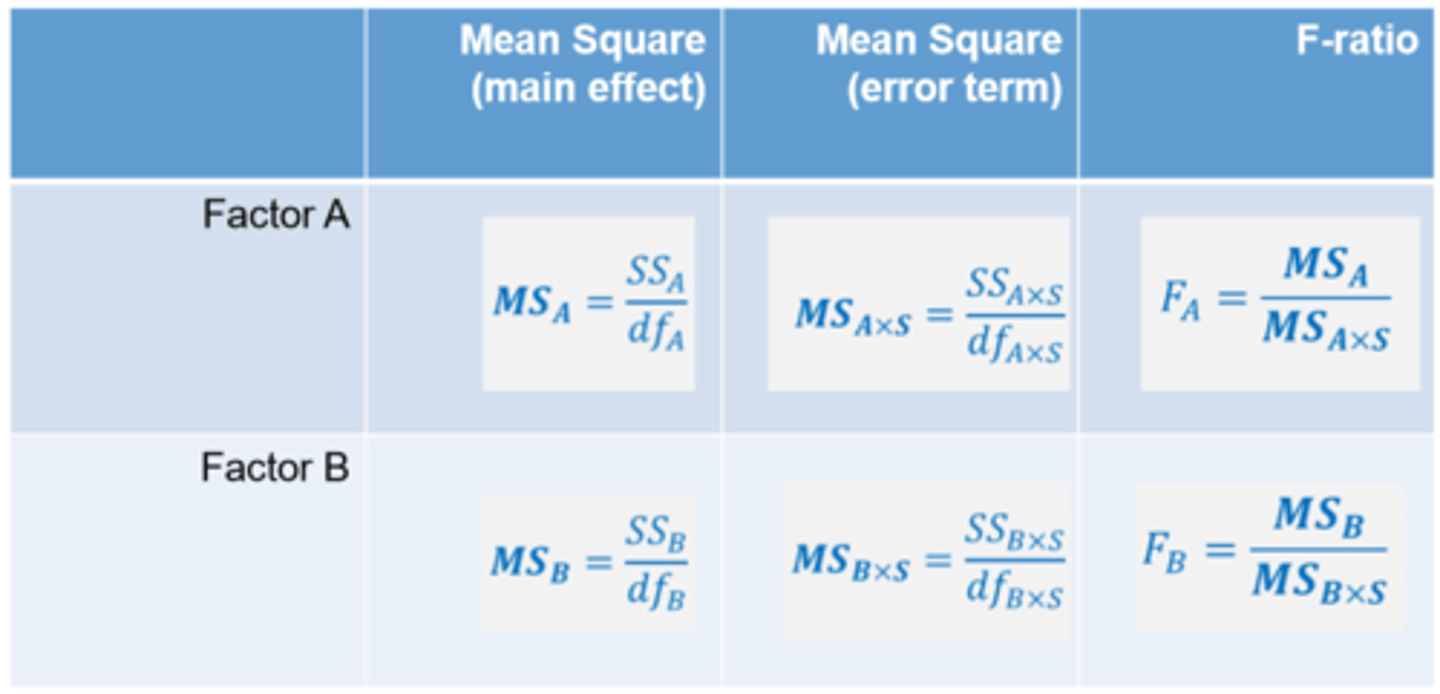2 - Within and mixed design ANOVAs
1/10
There's no tags or description
Looks like no tags are added yet.
Name | Mastery | Learn | Test | Matching | Spaced |
|---|
No study sessions yet.
11 Terms
What is a within-subjects design?
Also known as repeated measures design/ANOVA
A type of ANOVA where the same people have taken part in all possible levels of an IV
How is within-subjects different to between groups ANOVA?
It can control for individual differences, but risk a carryover effect (results could be due to order of conditions presented, fix through counterbalancing)
Different assumptions are made - we need to make an assumption of sphericity
Sources of systematic and unsystematic variability are different
Some degrees of freedom are slightly different
What is sphericity?
An assumption about variances
The difference between each pair of 'treatment levels' should have equal variance
variance_A-B = variance_A-C = variance_B-C
Only important if variable has three or more levels
If violated it increases the risk of Type 1 error
What happens when sphericity is violated?
Must use Mauchly's test to assess whether variances of differences are equal
You want a p-value greater than .05 as that would mean there is no significant difference in the variability of those differences in condition levels across your repeated measures variables
If assumption is violated (i.e., p<.05) we (i.e., SPSS) make corrections to degrees of freedom

How to adjust degrees of freedom for sphericity?
If you don't need to correct sphericity you would just look at sphericity-assumed
Sphericity is corrected by multiplying original df by estimates of sphericity
This can have a knock-on effect for MS and F values
Generally okay to use Greenhouse-Geiser

How to calculate within-participant variability (SS_W)?
It exists as we've manipulated our independent variable within the person, not between people
We need to calculate individual sums of squares and add these up to get SS_W

How to calculate two-way within-subjects ANOVA?
Need to break down the within-participant variability into different components
Partitioning variability for a two-way ANOVA requires different error terms for each main effect and interaction
Interaction =
Mean square (main effect) = SS_AXB / df_AXB
Mean square (error term) = SS_AXBXS / df_AXBXS
F-ratio = MS_AXB / MS AXBXS

How to calculate degrees of freedom for within-subjects ANOVA?
main effect df (SS_M)
= a-1 (number of levels of Factor A-1)
Error term df (SS_R)
=(a-1)(s-1) (main effect df x subject df)
What is a mixed-design ANOVA
An ANOVA that contains both between=groups and within-subjects independent variables
How do you partition variability in a mixed ANOVA?
Similar to between-groups and repeated measures ANOVAs
But the error term used in repeated measures and interaction effects is different

What are the mixed design ANOVA assumptions?
Need to meet the assumptions covered for both between and within subjects ANOVA
Need to check for:
Equality of error variance in between-groups factors - Levene's test
Equality of variances across different levels of within-subjects factors - Mauchly's test
Equality of covariance between within-subjects factors at each between-factor level - Box's M test